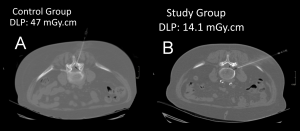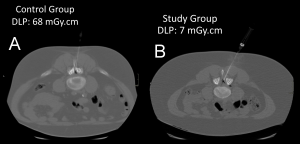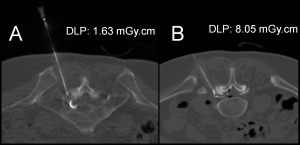The average number of injections per procedure is 1.39, ranging from 1 to 4 injections.
Epidural injections were the most common, totaling 106, followed by facet injections (84) and foraminal injections (38).
The majority of patients received injections at a single vertebral level (152 patients). Seventeen patients received injections at two distinct spinal levels. Two individuals received injections at three distinct spinal levels.
Amongst the patient population included in our study, 12 patients had orthopedic hardware.
The Dose Length Product (DLP) in the study group was significantly lower than in the control group (Table 2; Figure 1).
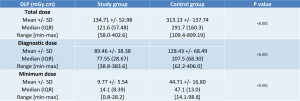
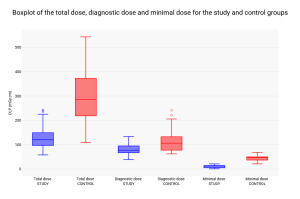
The study group had a mean total DLP of 134.71 mGy.cm, compared to 313.13 mGy.cm in the control group. This equates to a dosage reduction of 56.97%.
The mean DLP for diagnostic acquisitions was 89.46 mGy.cm in the study group against 128.43 mGy.cm in the control group. This equates to a dosage reduction of 30.34%.
The mean DLP for minimal dose acquisitions was 9.77 mGy.cm in the study group against 44.71 mGy.cm in the control group. This equates to a dosage reduction of 78.4%.
The needle tip visibility did not differ significantly between the two groups (p = 1.0, Chi-square test) (Figures 2, 3, 4, and 5). The needle tip was visible in nearly every patient in this study (170 out of 171).
